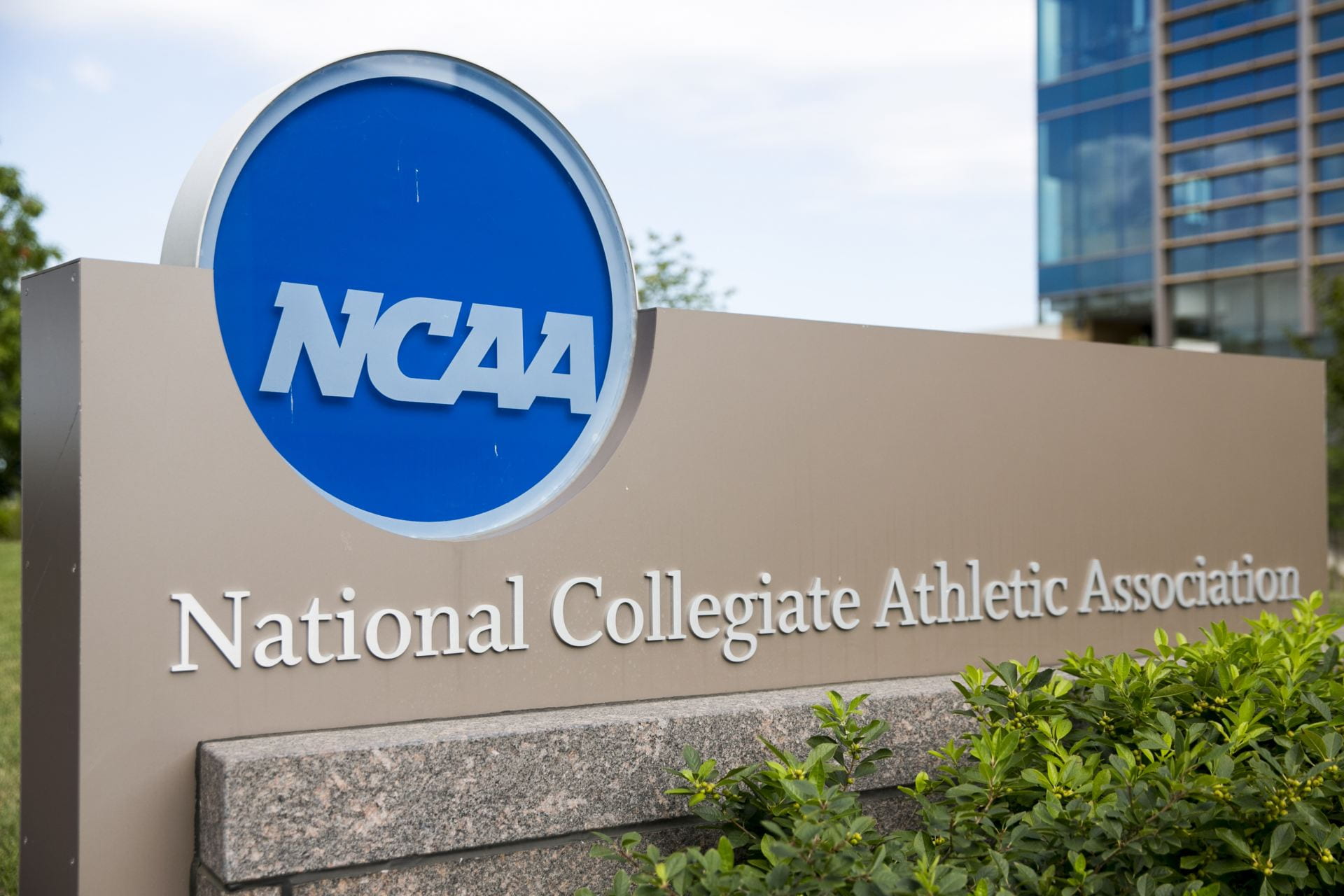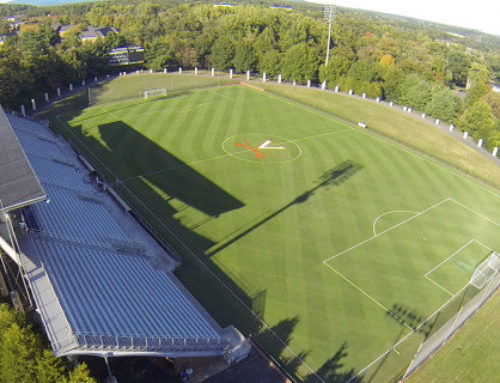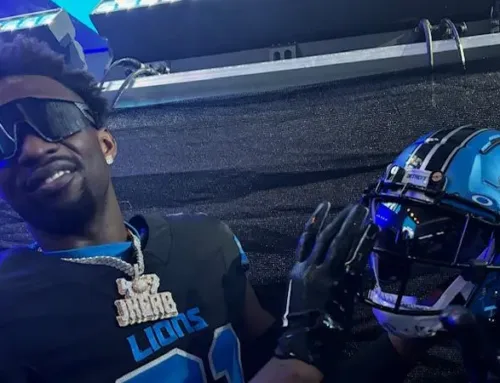Get ready for a tectonic shift in collegiate athletics, folks: Later today the NCAA is expected to formalize acceptance of a rule that will allow all student-athletes to transfer once without having to sit out a season of competition.
The one-time transfer rule for athletes in all sports has been approved by the NCAA’s Division Council, source tells @TheAthletic. Athletes in all sports will be able to transfer once and be immediately eligible.
(This isn’t official until end of Thursday’s meeting.)
— Nicole Auerbach 😷 (@NicoleAuerbach) April 14, 2021
Under normal circumstances fall athletes will have to notify their schools by May 1st that they intend to transfer and winter/spring athletes by July 1st. For this current academic year, everyone has until July 1st. This has been in the works for a while; in fact the NCAA was close to enacting it before last fall, but decided given the context of [gestures wildly at everything] to ruminate on it for a bit. As fan of college sports I’m sad about it, because it will most definitely lead to talented younger guys bailing if they don’t get the early playing time they want. At the same time, as a fan of fairness I can’t see any reason not to do this. Coaches can jump to another school whenever they want without penalty. Regular students can jump to another school whenever they want without penalty. How on earth is it then fair for the NCAA to require athletes to sit out a year if they jump to another school?
Yes, it creates more work for the coaches. Oh well. Keeping things easier on the coaches isn’t sufficient justification for maintaining an unfair system. Yes, kids can take the “easy” way out if things get hard for them, but in what other area of life is that avenue not available? And, more to the point, should that option be administratively unavailable? This for me falls into the category of “what would your reaction be if a collegiate pianist was held to the same standard.” You want to transfer closer to home, or to a place with professors you like better, or whatever, but you happen to be really really good at playing the piano. Cool, you can transfer, but no music classes for the next year. Sounds absurd, right?
I think the impact of this will be significant, but at the same time I think it will be somewhat less than what people fear. I think for most kids their decision to attend a certain school goes well beyond early playing time, and many will be willing to deal with early struggles to stay at the place they really wanted to be. I think many will realize in advance that the grass isn’t always greener, and many will receive counsel to that effect from their support systems. I do think, though, that this could affect Notre Dame, Stanford, Northwestern, Duke, and Vanderbilt – what I would say are the only FBS schools really trying to do serious football and serious academics – more than other FBS schools. It’s definitely something those staffs in particular will need to plan for, but then again it might not be all bad…
The Football Landscape
High-Level Thoughts
I’ll leave it to my 18S hoops colleagues to opine on the impact on basketball, as I don’t follow recruiting or player movement there anywhere near as closely as I do for football. For football, though, I’ve been following the program for longer than I care to admit (any other IRJ veterans here?) and I think I can offer some perspective on what the new paradigm might look like. First, as just noted, it’s important to realize that Notre Dame definitely will lose kids who get on campus and decide that the unique mix there isn’t for them. The program will probably need to hire someone specifically to manage the portal, and monitoring the temperature of individual players will become even more important part for the player development role (hi Ron!).
But it’s not all bad. I think it’s virtually certain that there will also be kids that Notre Dame just missed on and who become disillusioned wherever they end up. Transferring in can be a difficult academic prospect for any Notre Dame student, but let’s be honest here – the administration makes some concessions for football in first year admissions, and I think they’d be willing to make some reasonable concessions for transfer admissions too. I also think it’s entirely possible that kids at Duke or Vanderbilt, and maybe even Stanford and Northwestern too, might want to take a step up in football. And it would be easier for them to come in with an appropriate number of transferable credits.
TL,DR is that it will be a change, and an extra thing Notre Dame in particular has to deal with, but I don’t think it’ll be the end of the world and I suspect there will be some unexpected positives for the Irish as well.
Drilling Down
As you probably have guessed by now, I’d be extremely surprised if this leads to a Sisyphean task of roster management for the Irish staff. However, there are some areas where it will absolutely be a challenge. There’s an old football chestnut to the effect that the farther away from the ball you are at scrimmage, the more drama there is; look at, say, Terrell Owens vs. Ted Washington and you get the general idea. (You don’t know who Ted Washington is, maybe? My point exactly.) I suspect that will play out at least loosely with movement under this new rule too.
Not surprisingly, then, I imagine that wide receivers may pose the biggest challenge for Notre Dame. They can be a bit prima-donna-ish, to say the least; as a group, they often have a shorter fuse than anyone else regarding early playing time and are more willing to be vocal about their displeasure. The receiver group will have to be managed very carefully, perhaps even by making a greater effort to at least get the younger guys a cup of coffee each season. Which, you know, wouldn’t be a bad idea anyway, but that’s another discussion.
If we stick to the “farther from the ball” rule I’d jump to corners next, but let’s be real: We all know that quarterbacks are a constant risk to transfer already, as the NCAA had already effectively instituted a penalty-free transfer rule for them. Gone are the days, it would seem, when a school could maintain a pipeline of elite quarterback prospects – remember when USC went from Carson Palmer to Matt Leinart to Mark Sanchez to Matt Barkley? Even Alabama can’t pull that off now. Whether it’s five-stars Jacob Eason and Justin Fields transferring out of Georgia in successive years, or JT Daniels transferring into Georgia, or Feleipe Franks getting out of Gainesville, or our own Phil Jurkovec not wanting to wait another year, quarterbacks now largely expect to play early and keep playing. I suspect that some portion of quarterback prospects will continue to shop aggressively even after arriving on campus.
I think it’s pretty easy to project that offensive line and interior defensive line will be the least common transfer group; generally nobody expects to play early there, and very few guys get disgruntled quickly. Maybe the occasional defensive end will get dramatic and bolt but they still tend to be fairly stable, and it’s also pretty easy to naturally maintain a rotation of guys there. Tight ends are probably right there too, and I wouldn’t expect to see an unusual amount of movement from that group.
I’m not sure about numbers on this – I looked briefly and it’s a bit hard to get anything meaningful – but I feel like linebackers don’t transfer often. I think they tend to be lunchpail guys and they’re just going to come to work for the most part. Defensive backs, going back to the “farther from the ball” metric, are perhaps another story. Elite defensive back prospects will almost certainly expect to get on the field early, as did guys like Kyle Hamilton, Derek Stingley, Patrick Surtain, Paulson Adebo, etc. It’s a position where younger guys can have a bit of a straighter path to the field, particularly at cornerback, so naturally many do and will expect that they will have a straighter path to the field.
Summing Up
The one-time penalty-free transfer is the right move in terms of fairness to the players, but there’s no question it will have an impact in college footbal and it gives coaches everywhere one more headache. For Notre Dame in particular, I think it may make some positions that are already harder to recruit, most notably receiver and defensive back, a little bit harder to manage. At the same time I expect the Irish will benefit some from this too; it may well be that an elite receiver they just missed out is now buried at Ohio State, for example, and willing to look elsewhere. I think it’s premature to say this is the death knell for Notre Dame’s chances of cracking the upper echelon of championship-level football. Will it be different? Yes. Dramatically so? You know what, I don’t think so. We’ll just have to wait and see.





I know one thing, our scholarship posts just got a lot less structured in terms of trying to hard cap numbers, although that trend has been happening for ~10 years I suppose.
Good move to standardize since the waiver process was an exploitable joke that players could get eligible immediately anyways if they had good enough representation.
I could be wrong, but I get the sense for Notre Dame this probably means you lose Kendall Abdur-Rahman a year early, when some may worry it means actually be a Jordan Johnson.
Keeping the pitch of “why don’t you just tough it out and try to compete one more year, get your ND degree and then transfer, probably with 2 years left of eligibility left” seems like a reasonable carrot for those who were inclined to actually commit to Notre Dame in the first place and make/keep grades. It doesn’t seem like many players leave the program without a degree these days, and the ones that do aren’t ones the program is really going to miss, anyways.
I suspect that continues, but who knows. Brave new world, but I think this one isn’t going to be a major, huge shift in a world with grad transfers and immediate waivers that can be approved. If someone really wants to leave, they’re going to go.
I don’t think this has to be a bad thing for ND at all. ND absolutely should just treat Duke, Vandy, and Northwestern (and Stanford, if their program falls further) as minor-league feeder schools and actively recruit the best 1-3 undergrads from there each year. As the post gets at, too, we probably can similarly pick off some of the top-100 WR recruits that can’t beat out the top-20 WRs recruits at Ohio State.
There is probably going to be a lot that happens from the “law of unintended consequences” aspect, but I agree that on the surface this seems to help ND. We’ve been bringing in enough transfers who are quality players that it seems someone on the staff is already doing this to some degree. We would just need to ramp up the production.
I also think that when starry-eyed, talented players go to a football factory and realize that making the pros may be a bit more difficult than they assumed it would be while dominating in high school…having a quality degree “just means more.”
I really like this new rule. I don’t know if this will help or hurt ND, time will tell. The one thing I disagree with you Brendan is the old and tired excuse to justify this new rule, “coaches can jump to another school whenever they want without penalty.”
Any coach has the absolute right to do so. It is his or her job being a coach to earn a living for themselves and their families and if they have a chance to better themselves by taking another job, then do so. They are no different then anyone else that has a job and looks to better themselves by moving on to another job.
I didn’t say the coaches should be restricted. I agree with you that they have the right to jump. I think it’s pretty hypocritical from the NCAA’s perspective to, in light of that, restrict the players’ ability to jump without penalty.
In general, my stance is not that anything in college athletics that isn’t in the NCAA’s purview should be as restrictive as the NCAA, but rather that the NCAA should be as permissive as those things not in its purview absent a very good reason to lock it down.
I think the NCAA is a crap organization dedicated to maintaining maximum overall profitability for athletic departments at the expense of the student athlete. But, again, that’s another discussion.
I had no idea other sports outside bball and fball could this already. Agree that it makes no sense that this wasn’t already happening.
I would think basketball may get pretty crazy with transfers. in basketball, far more than football, one can one look at the landscape and figure out if I go to school X I can start or play a significant role.
This may kill a lot of the lower programs. It’ll be a lot harder for them to keep talented upper classmen who took a couple of years to develop. And with so many players leaving for the pros so often, there is often lots of room at many schools too for players to transfer into – especially the top programs.
Actually, I wonder what this will do for *coaches*?? You come in to play for one coach and he leaves, will there be a lot more of an exodus when coaches leave (for any sport)?